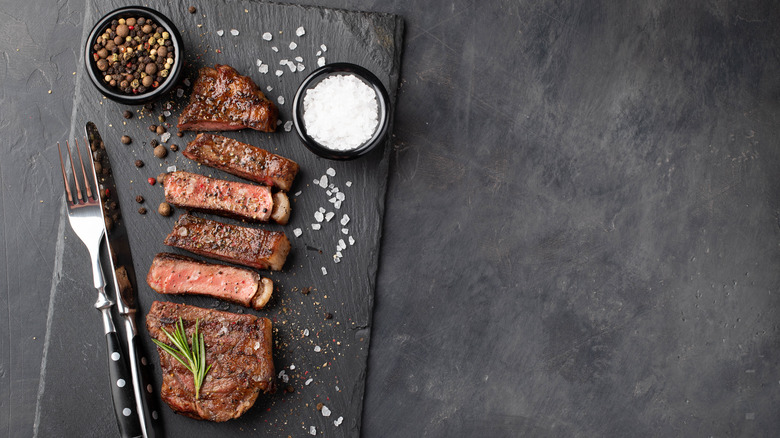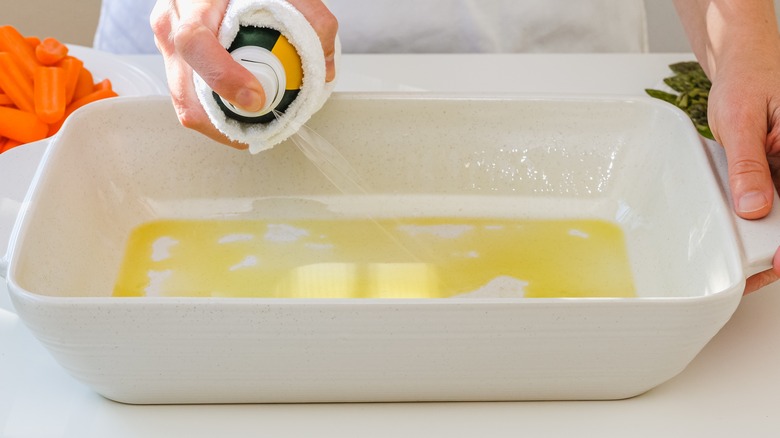How To Keep Crunchy Finishing Salt From Dissolving On Hot Steak
Lest you thought that you only needed to salt your steak once before cooking it, a good sprinkling of finishing salt provides just the right crunchy, saline flourish to a crackling piece of meat. However, there is a problem. Far from the promised crunch, the salt has pooled together with the steak's juices into a melty mess. You'll still get the wonderful saltiness, but the desired texture will be gone.
Finishing salts are, as they sound, used as the finishing touch to a dish. You can use them on everything from caramel desserts to fish to, of course, steak. A decidedly gourmet variety, finishing salts are specifically intended for minimal use. They should provide just enough salinity without overpowering the natural flavors of the dish. They can also come with their own flavors, such as smoke, maple, bacon, or hot pepper. Notable finishing salts include Maldon, fleur de sel, and Himalayan pink salt.
Besides flavor, you want a good crunch from a finishing salt. The crystals for this variety are intentionally larger than those in standard table salt, and therefore have a more pronounced texture. Unfortunately, the size difference does next to nothing to keep the crystals from dissolving when they come into contact with a hot juicy steak. Fortunately, all they need is a little coating of oil.
Add a little oil to keep the salt crystals intact
All you need to do to keep the crystals of your finishing salt crunchy and intact atop your freshly cooked steak is to coat them with a little cooking oil. You could use vegetable oil for this, but a light olive oil or the like also does the trick if you're not one for seed oils. Using either an oil mister or a plastic or glass spray bottle, spray a small amount of your chosen oil into a bowl. (If you don't have either, a light brushing with a bristle basting brush will work just fine). Take about 1½ teaspoons of finishing salt and toss it in the oiled bowl.
The oil provides a barrier between the steak and the salt since it doesn't mix with water. This protective coating keeps the steak's warm juices from dissolving the salt. Just be sure not to add too much oil, as it can clump the crystals together, making them impossible to sprinkle. You really only need a quick spray to get a sufficiently light layer that stops moisture from breaking down the salt.
What you get, then, is a steak that is both succulent and well-seasoned, crunchy and tender. It's a wonderfully complex series of textures and flavors going on, making for a satisfying meal to eat. And it didn't take all that much effort.

